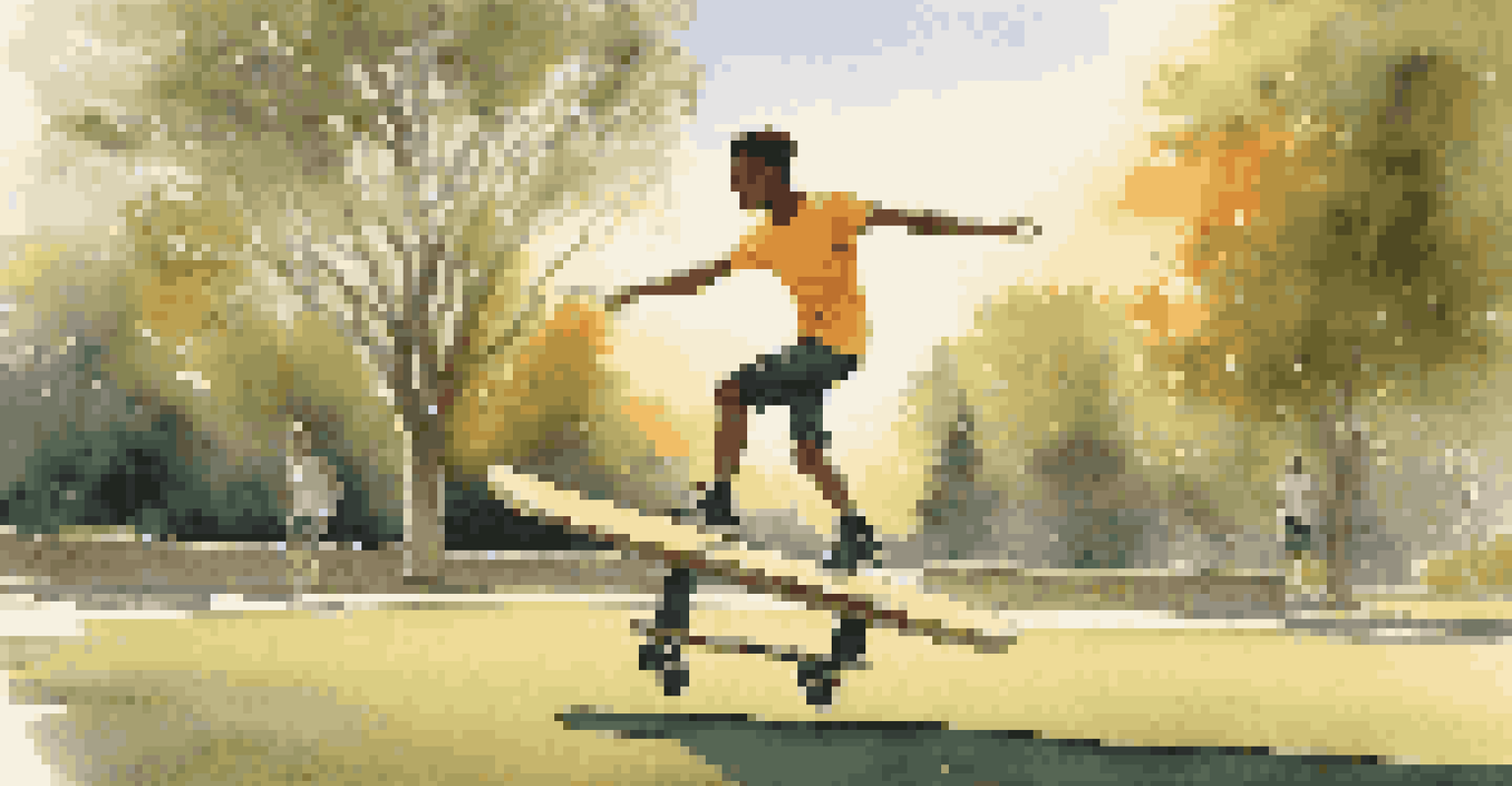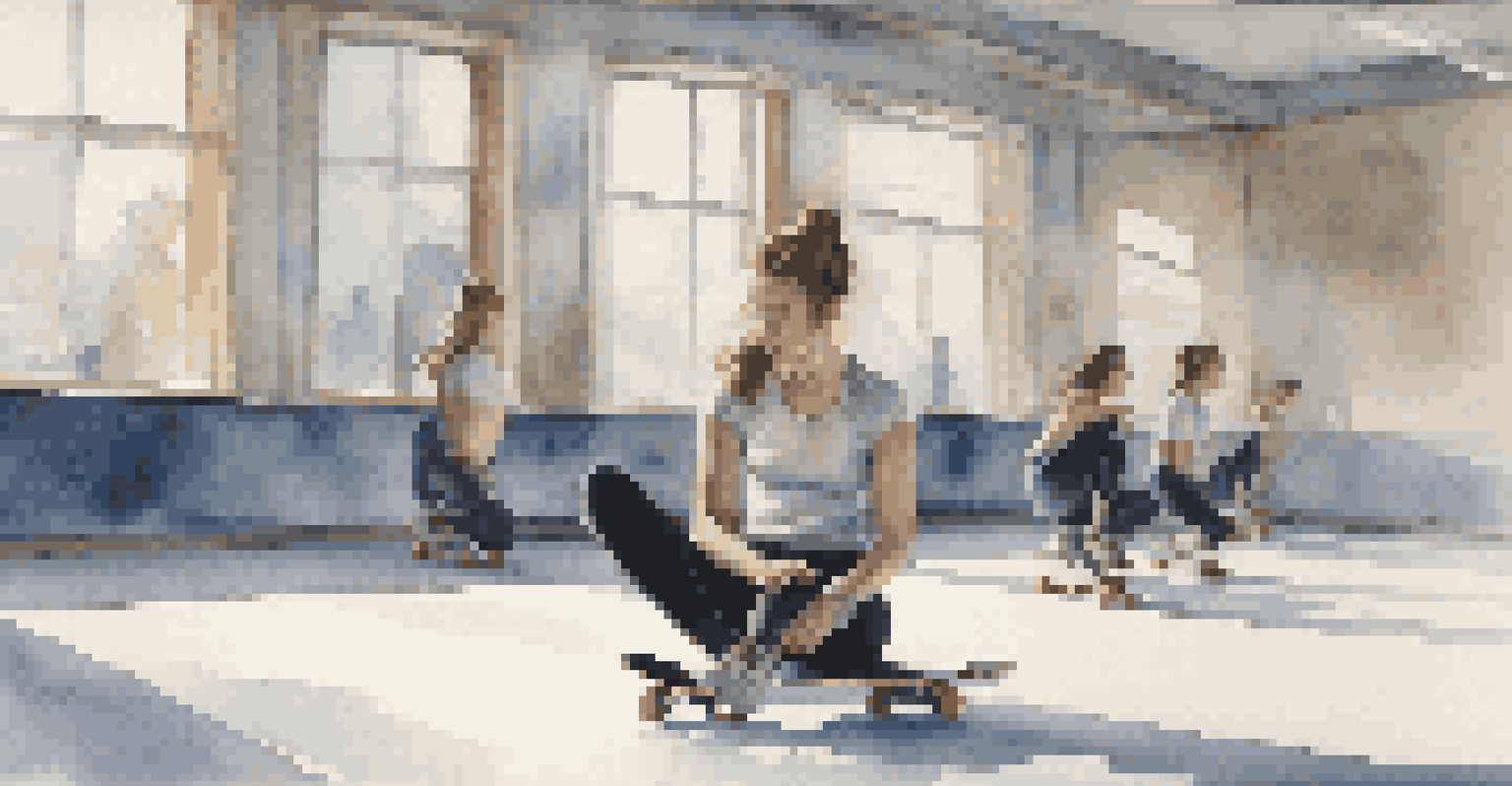Ice Skating Workouts: Strengthening Your Skills Off the Ice

Why Off-Ice Training is Essential for Skaters
Off-ice training is a crucial element for any serious ice skater. It allows you to build strength, flexibility, and endurance, which are all essential for executing those intricate moves on the ice. By focusing on these areas off the rink, you can significantly improve your performance during skating sessions.
Success is where preparation and opportunity meet.
Think of it like a musician practicing scales; the more you refine your skills away from the stage, the better you'll be when it's time to perform. This kind of preparation not only boosts your confidence but also helps prevent injuries by conditioning your body for the physical demands of skating.
Incorporating off-ice workouts into your routine can create a well-rounded athlete. It’s about setting a strong foundation so that when you lace up your skates, you’re not just relying on practice time but on a robust physical base.
Strength Training: Building Muscles for Skating
Strength training is one of the most effective ways to enhance your skating skills. Exercises like squats, lunges, and deadlifts target the major muscle groups used in skating, such as the legs, core, and glutes. These workouts help you generate more power and speed, which are vital during jumps and sprints on the ice.

For example, incorporating resistance bands can add an extra challenge to your routine, simulating the push-off motion of skating. Not only does this improve muscle strength, but it also helps with balance and stability, making you less prone to falls.
Off-Ice Training Boosts Performance
Engaging in off-ice training enhances strength, flexibility, and endurance, directly improving skating skills.
It's important to focus on both upper and lower body strength. A strong upper body aids in maintaining proper posture and executing arm movements that can enhance your overall skating technique.
Flexibility Training: Enhancing Range of Motion
Flexibility is key to performing elegant and intricate moves on the ice. Stretching not only helps improve your range of motion but also aids in muscle recovery after intense skating sessions. Regular flexibility training can make a significant difference in your overall performance.
The difference between a successful person and others is not a lack of strength, not a lack of knowledge, but rather a lack in will.
Consider incorporating yoga or Pilates into your off-ice routine. These practices are excellent for skaters as they promote flexibility, balance, and core strength—three vital components of effective skating. Plus, they can be a fun way to break up the monotony of traditional workouts.
A good rule of thumb is to stretch both before and after your workouts. This practice helps warm up your muscles and prevents injury while also aiding recovery, so you can hit the ice feeling your best.
Endurance Workouts: Building Stamina for Longer Sessions
Building endurance is essential for skaters who want to maintain peak performance throughout their routines. Incorporating cardiovascular exercises like running, cycling, or swimming into your training can help improve your stamina. This will allow you to skate longer without fatigue, which is particularly important during competitions.
Think of endurance training as adding fuel to your fire; the more you build your cardiovascular fitness, the longer you can sustain your energy levels on the ice. It’s like preparing for a marathon rather than a sprint; endurance allows for consistency and control.
Balance and Coordination Matter
Improving balance and coordination through targeted workouts leads to more graceful and accurate movements on the ice.
Aim for at least 30 minutes of cardio a few times a week. This consistent effort will translate into better performance, making you feel lighter and more agile on the ice.
Balance and Coordination: Key Skills for Skating
Balance and coordination are crucial skills for any ice skater. Off-ice workouts designed to enhance these abilities can lead to better stability while skating. Activities like balance board training, agility drills, and even certain dance forms can significantly help in this area.
Imagine trying to balance on a tightrope; every slight shift in your weight requires precise control. Similarly, good balance allows you to execute turns, jumps, and spins with more grace and accuracy. It’s about training your body to respond seamlessly to movements.
Incorporating a mix of strength and balance workouts can create a solid foundation. This dual focus prepares you for the unpredictable nature of skating, allowing for smoother transitions and better control of your movements.
Mental Preparation: The Power of Visualization
Mental preparation is just as important as physical training for skaters. Visualization techniques can help improve your focus and confidence. By mentally rehearsing routines and moves, you can create a roadmap for your body to follow when you hit the ice.
Consider this: athletes often use visualization to see themselves successfully completing their routines before they even step onto the rink. This mental practice can enhance muscle memory and make executing moves feel more instinctual.
Mental Preparation is Key
Utilizing visualization techniques helps skaters enhance focus and confidence, significantly improving performance.
Incorporating mindfulness or meditation into your routine can also help clear your mind and sharpen your focus. When you feel mentally prepared, you’ll find that your performance can significantly improve, allowing you to skate with greater ease and creativity.
Creating a Balanced Off-Ice Routine for Success
To truly benefit from off-ice workouts, it’s essential to create a balanced routine. This means incorporating strength, flexibility, endurance, and coordination training into your weekly schedule. A well-rounded approach ensures that you’re not neglecting any aspect of your physical development.
Consider setting specific goals for each week, focusing on different elements of your training. For instance, one week could emphasize strength, while another focuses on endurance or flexibility. This variety keeps your workouts fresh and allows for comprehensive skill development.

Lastly, don’t forget to listen to your body. Recovery is just as important as training, so schedule in some rest days to ensure you’re not overexerting yourself. A balanced off-ice routine will pave the way for your success on the ice.